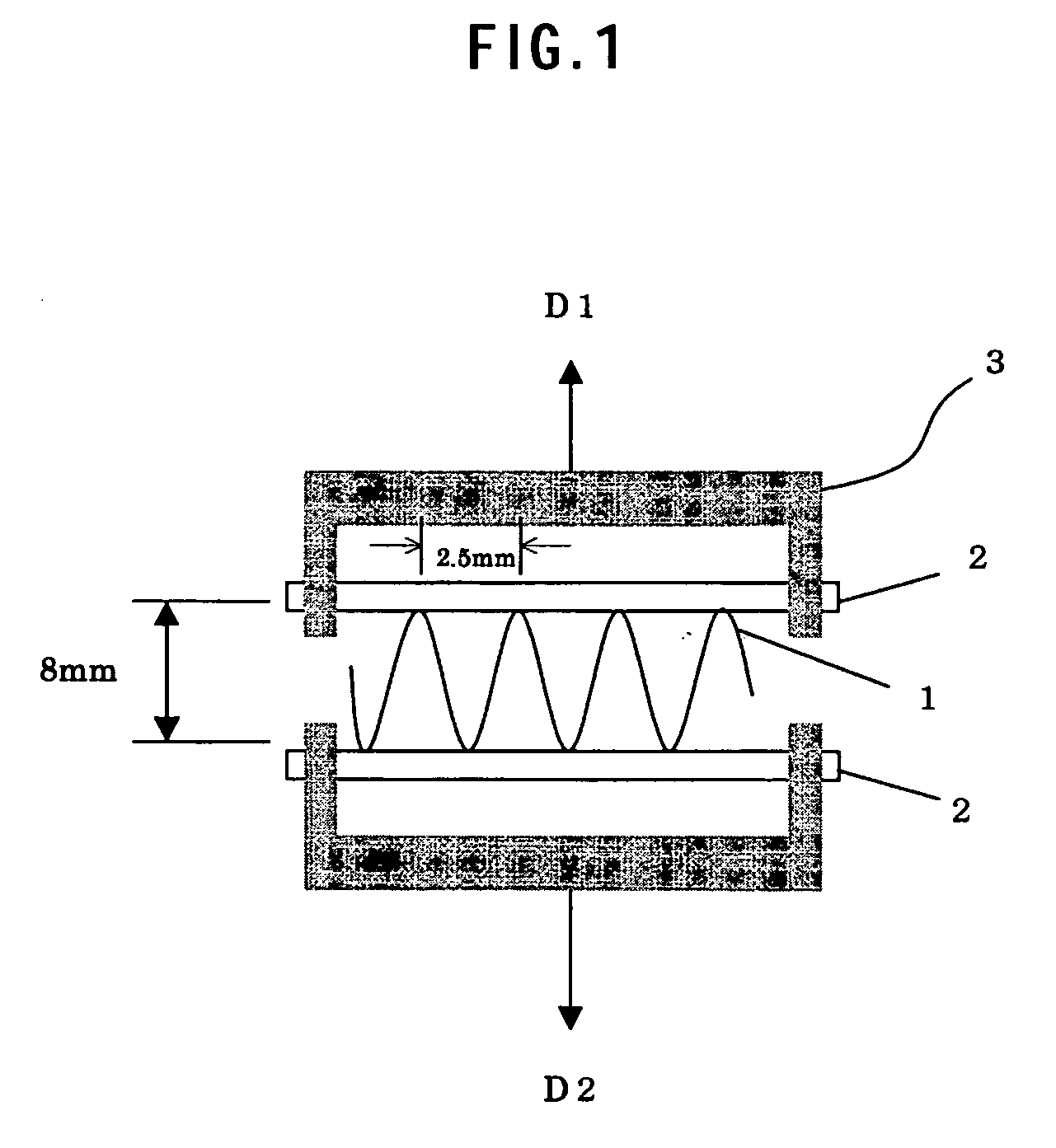Heat exchanger and fin material for the heat exchanger
a heat exchanger and fin material technology, applied in the field of heat exchangers, can solve the problems of increasing factors that may accelerate the corrosion, chromate type chemical surface treatment, and threatening the use of heat exchangers, and causing death
- Summary
- Abstract
- Description
- Claims
- Application Information
AI Technical Summary
Benefits of technology
Problems solved by technology
Method used
Image
Examples
examples
[0058] Examples and Comparative Examples of the present invention are given below.
[0059] Slabs of the alloys shown in Table 1 were prepared by conventional semi-continuous casting. C1 to C8 are alloys which serve as core materials of brazing sheets for fins, of which C1 to C4 are alloys used in the present invention. Also, S1 to S10 are alloys which serve as brazing materials of the brazing sheets, of which S1 to S4 and S7 to S9 are alloys used in the present invention.
Table 1
[0060] Brazing sheets according to the combinations shown in Table 2 were produced in the following way. Using core material slabs having been put to facing and brazing filler materials having been put to preliminary hot rolling, the latter was laid on both sides of the former in combination in such a way that the total thickness came to be about 550 mm in a thickness ratio giving the desired clad percentage. These were subjected to preliminary heating under the conditions shown in Table 3, followed by hot r...
PUM
| Property | Measurement | Unit |
|---|---|---|
| length | aaaaa | aaaaa |
| temperature | aaaaa | aaaaa |
| temperature | aaaaa | aaaaa |
Abstract
Description
Claims
Application Information
 Login to View More
Login to View More - R&D
- Intellectual Property
- Life Sciences
- Materials
- Tech Scout
- Unparalleled Data Quality
- Higher Quality Content
- 60% Fewer Hallucinations
Browse by: Latest US Patents, China's latest patents, Technical Efficacy Thesaurus, Application Domain, Technology Topic, Popular Technical Reports.
© 2025 PatSnap. All rights reserved.Legal|Privacy policy|Modern Slavery Act Transparency Statement|Sitemap|About US| Contact US: help@patsnap.com


